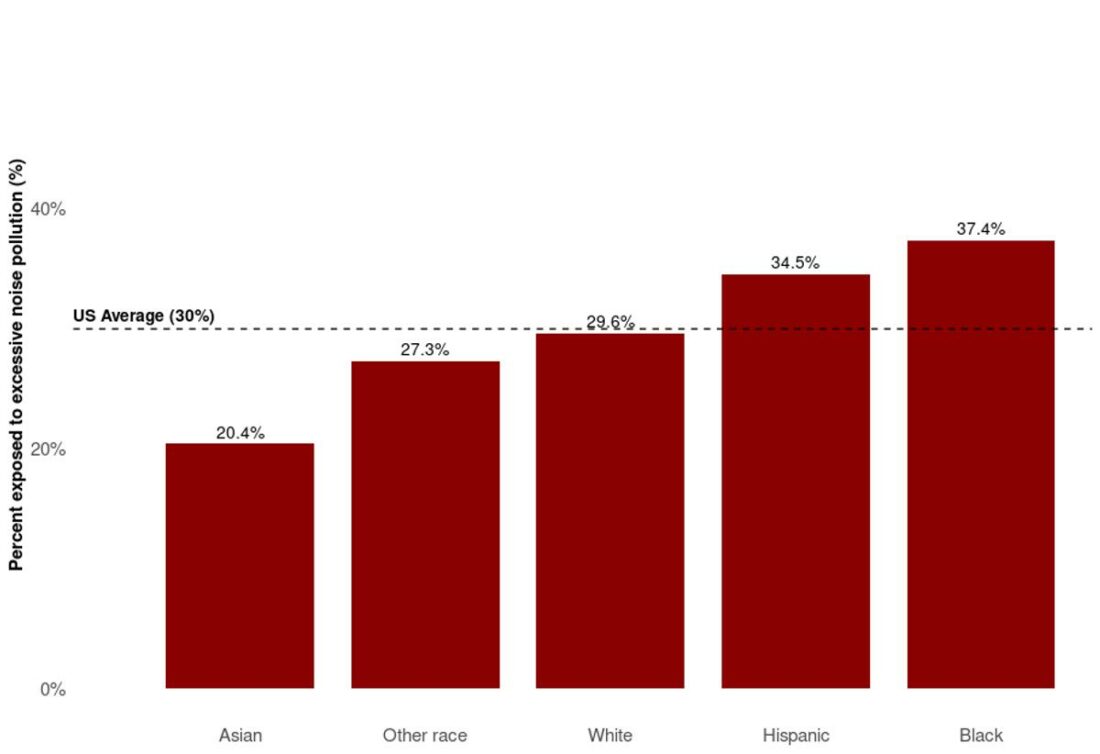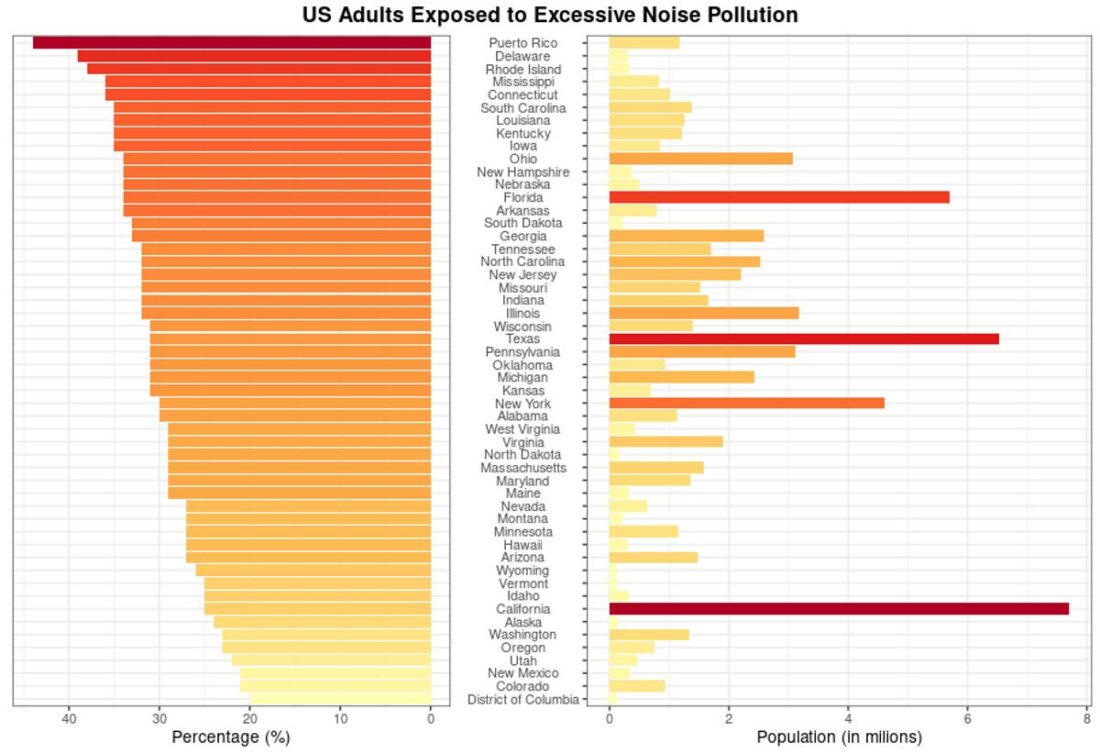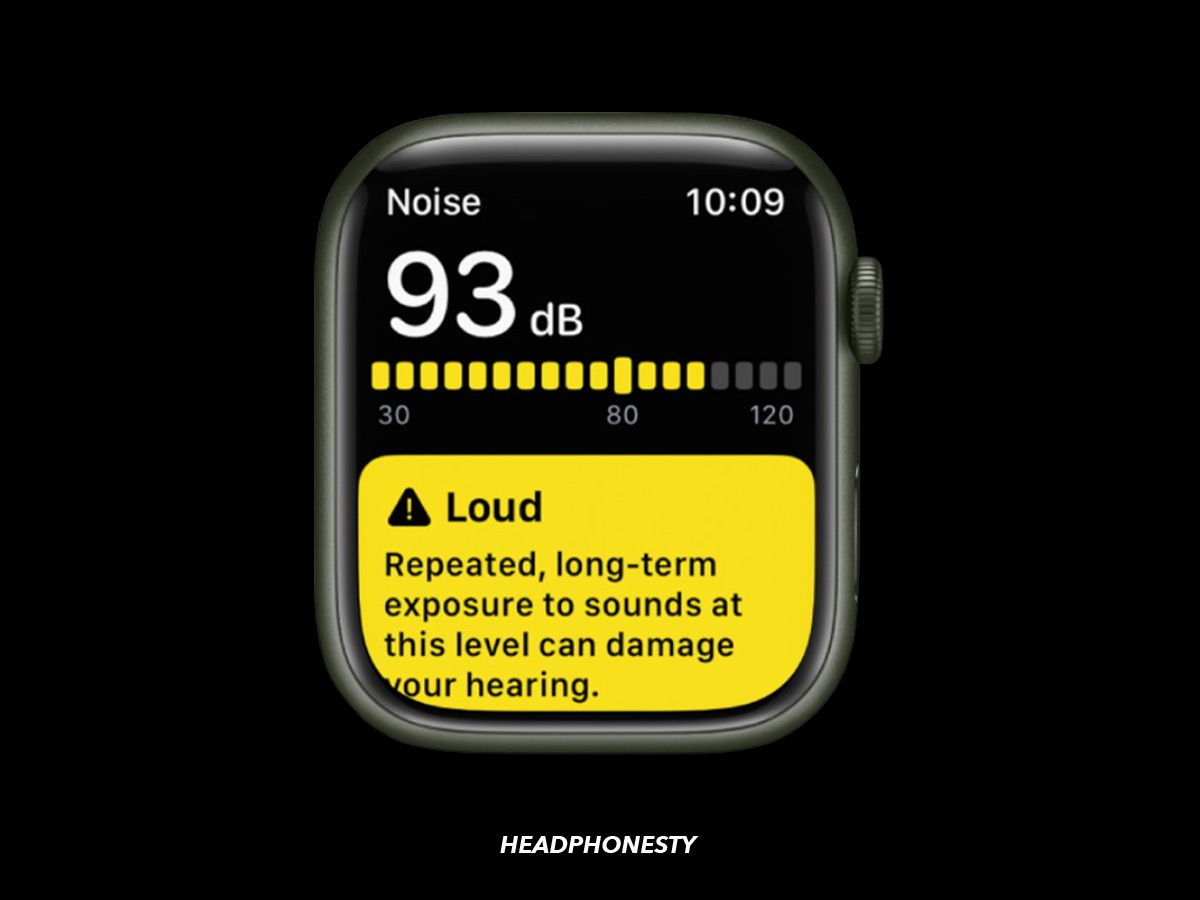Turn down the volume, America.
Key Highlights:
- Apple Hearing Study indicates 30% of US adults are exposed to excessive noise levels.
- The study used data from about 130,000 Apple Watch users between November 2019 and December 2022.
- The WHO and US EPA recommend an annual average noise exposure level of 70 dBA as the safe limit.
According to a recent Apple Hearing Study, an estimated one in three Americans is exposed to excessive noise. Using data from approximately 130,000 Apple Watch users between November 2019 and December 2022, the study shows that at least 77 million adults are exposed to harmful noise levels above 70 decibels (dBA).

According to the World Health Organization (WHO) and the US Environmental Protection Agency (EPA), the annual average noise exposure of 70 dBA poses no risk for hearing loss. As such, even 24-hour exposure to such noise levels should not cause any damage to the ears.
In contrast, prolonged exposure to sounds over 70 dBA is more likely to cause long-term hearing damage.
Based on the graph above, the louder the sound, the shorter the exposure time is recommended. Anything longer than these recommended exposure limits should warrant hearing protection.
Excessive Noise Exposure by Location, Age, Sex, and Race
To obtain its results, the Apple Hearing Study weighted the data from each state (age, sex, and race) against data collected by the American Communities Survey between 2015 and 2019. Areas with fewer than 25 participants were excluded for privacy purposes.
The study showed significant differences in noise exposure based on race and ethnicity.
According to the study findings, out of the 30% of Americans exposed to excessive noise levels, Black (37%) and Hispanic (34%) adults are most affected. On the other hand, Asians (20%) and other minorities (27%) were less commonly affected.

The study also reported a clear disparity in noise exposure based on location and age. In particular, Puerto Rico logged the highest exposure level to noise pollution at 44%. It’s followed by other states like Delaware (39%), Rhode Island (38%), Connecticut (36%), and Mississippi (36%).

States with larger populations, such as New York, Florida, California, and Texas, showed more people exposed to unhealthy noise levels. The study also highlights the top metropolitan areas with the highest concentration of participants exposed to noise pollution. These include:
- Saginaw, Michigan (60%)
- Jonesboro, Arkansas (52%)
- Hinesville, Georgia (52%)
Generally, adults within the 35-44 (33.9%) and 18-24 (32.9%) age groups are also exposed to higher noise levels than other age groups. However, no significant differences were recorded in terms of gender. On average, 31.8% of males are more exposed to noise pollution, with women not far behind at 28.9%.
Impacts of Excessive Noise Exposure
Exposure to excessive noise can have harmful effects on your health. These include:
- Hearing damage
- Annoyance
- Heart problems
- Sleep disruption
- Worsening of anxiety or depression
The risk of experiencing these impacts is higher with longer exposure to louder noise levels.
Tips for Reducing Excessive Noise Exposure
The study recommends the following tips to reduce exposure to excessive noise pollution:
- Moving away from noisy areas.
- Taking frequent “quiet breaks.”
- Buying quieter appliances or equipment.
- Using earplugs or earmuffs to protect your hearing.
- Using lower volume on devices such as headphones or AirPods.
Apple Watch users can also regularly monitor ambient noise levels using the Noise app. This lets wearers know if surrounding noise in their environment has reached unsafe levels. Another option is the NIOSH Sound Level Meter app, which was developed by hearing loss experts and acoustics engineers.
